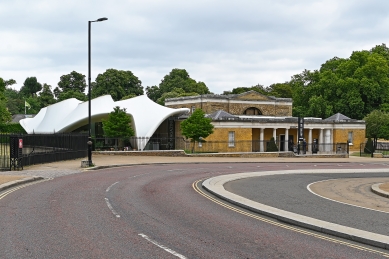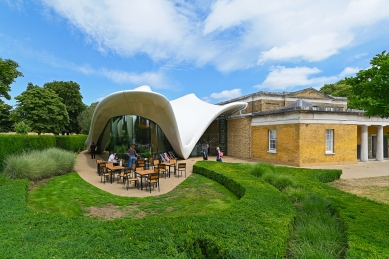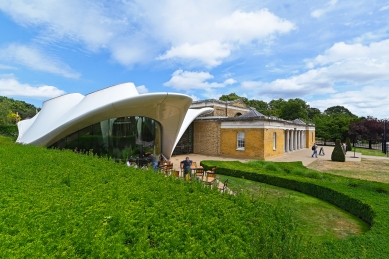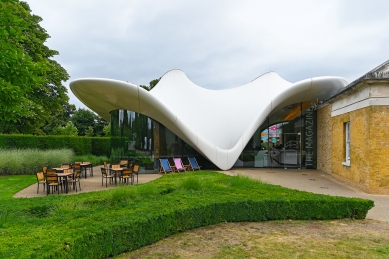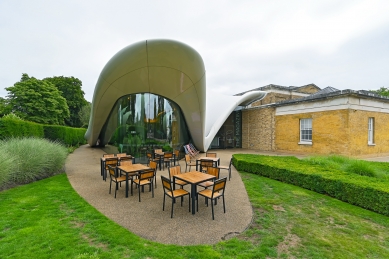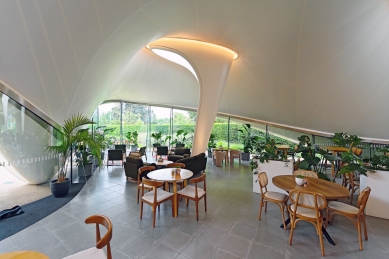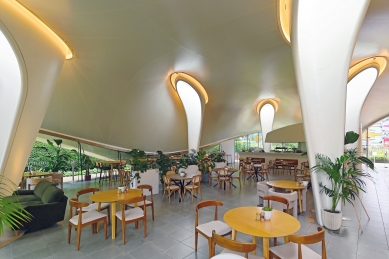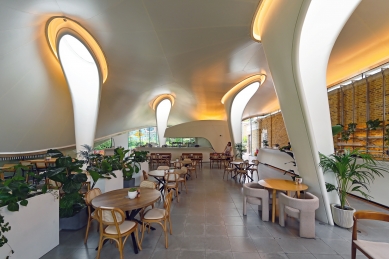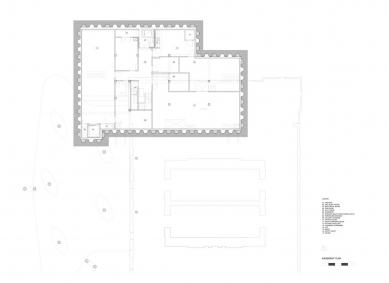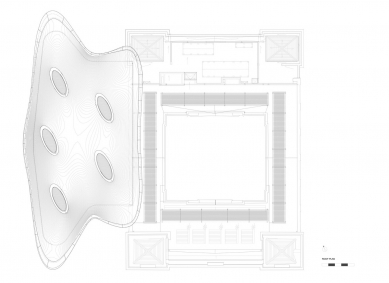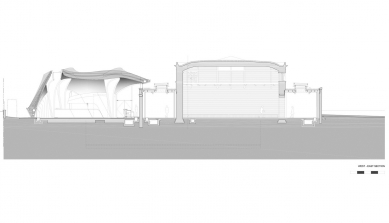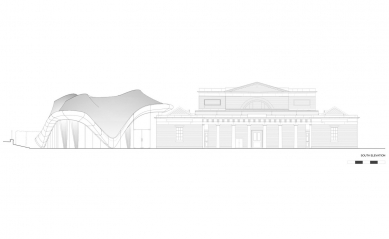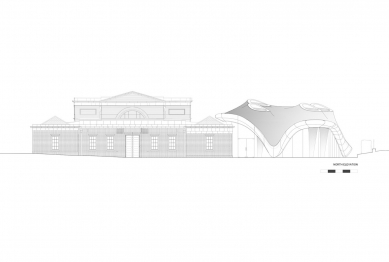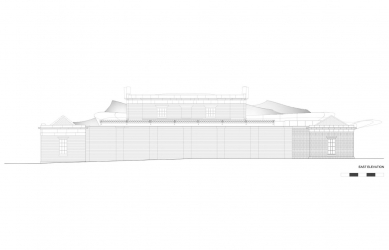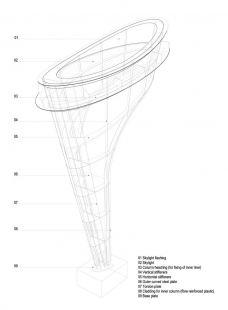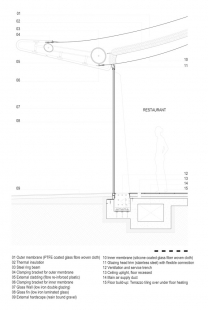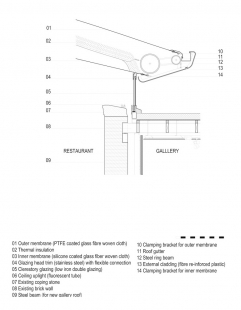
Serpentine North Gallery

The tradition of the summer pavilions at the Serpentine Gallery began in 2000 with architect Zaha Hadid, whom the same institution summoned for collaboration several times thereafter. In 2007, when the pavilion by the Norwegian studio Snøhetta was experiencing a slight delay, Zaha Hadid quickly created an organically shaped shelter “Lilas” inspired by lily petals for the festive opening. Subsequently, in 2011, Zaha Hadid’s project for the reconstruction and expansion of a nearby armory, located just a few hundred meters north of the Serpentine Gallery in Kensington Gardens, was introduced. A white organically shaped structure resembling a tent was added to the former neoclassical military powder magazine from the early 19th century, where the restaurant The Magazine is now located. White textile sails are stretched over a steel frame with laminated edge reinforcements. A set of five funnel-shaped steel columns also serve as skylights, distributing sunlight into the interior. The columns are shaped similarly to the skylights designed by Frei Otto for the Stuttgart central station (originally, Frei Otto was supposed to be the author of the Serpentine summer pavilion in 2007, but Snøhetta was subsequently chosen), which means Zaha inadvertently paid homage to the German engineer and founder of the field of lightweight thin-walled structures. Zaha Hadid primarily referenced lily petals, but for someone else, the shape may resemble the famous scene with Marilyn Monroe's lifted skirt in the film The Seven Year Itch (The Seven Year Itch, Billy Wilder, 1955). Nonetheless, the lightweight transparent structure represents an ideal contrast to the existing military fortress of brick masonry. In addition to exhibitions and souvenir sales, curators Julia Peyton-Jones and Hans Ulrich Obrist plan to host musical and theatrical performances, lectures, and film screenings at the new Serpentine North Gallery.
The English translation is powered by AI tool. Switch to Czech to view the original text source.
0 comments
add comment


